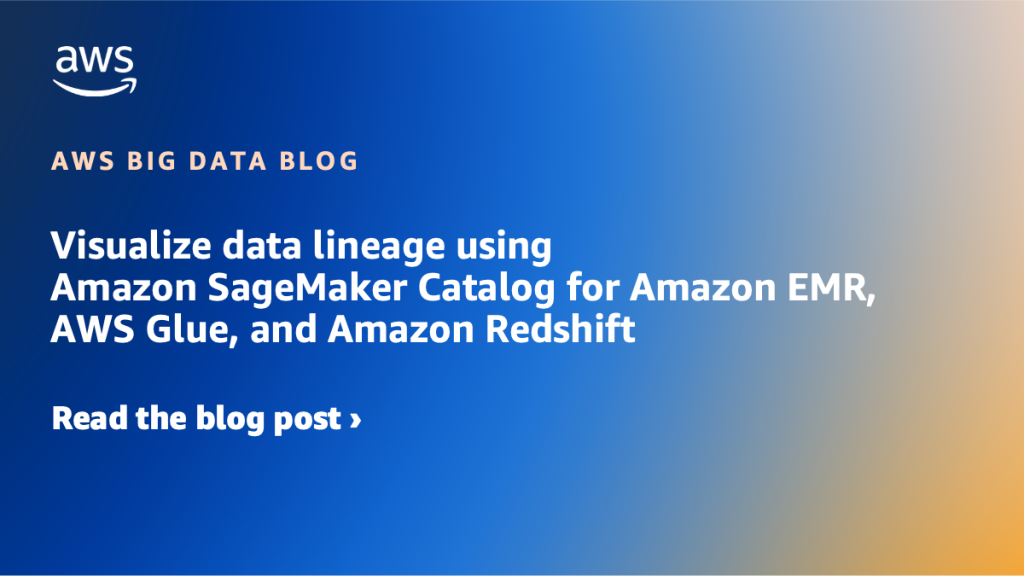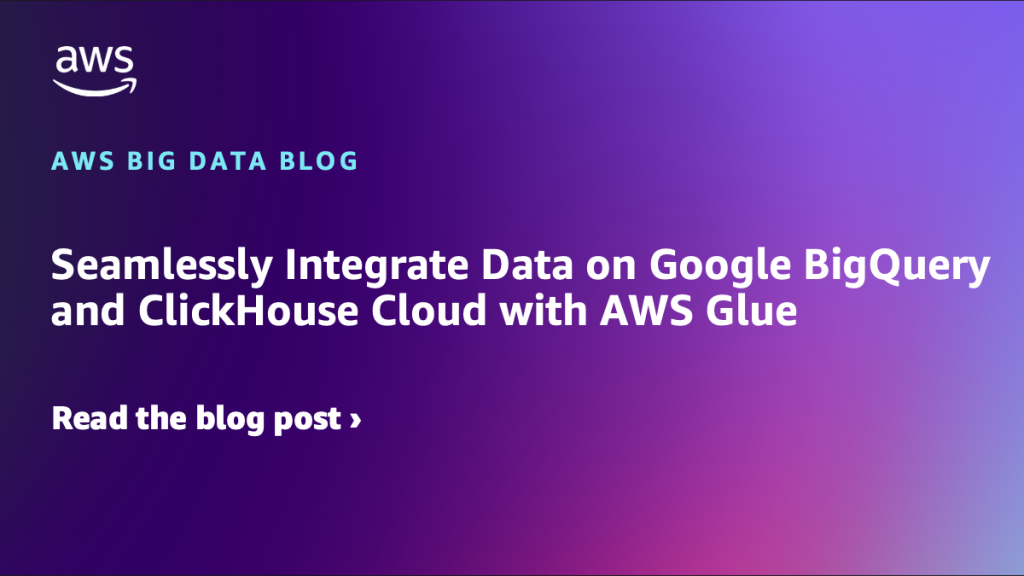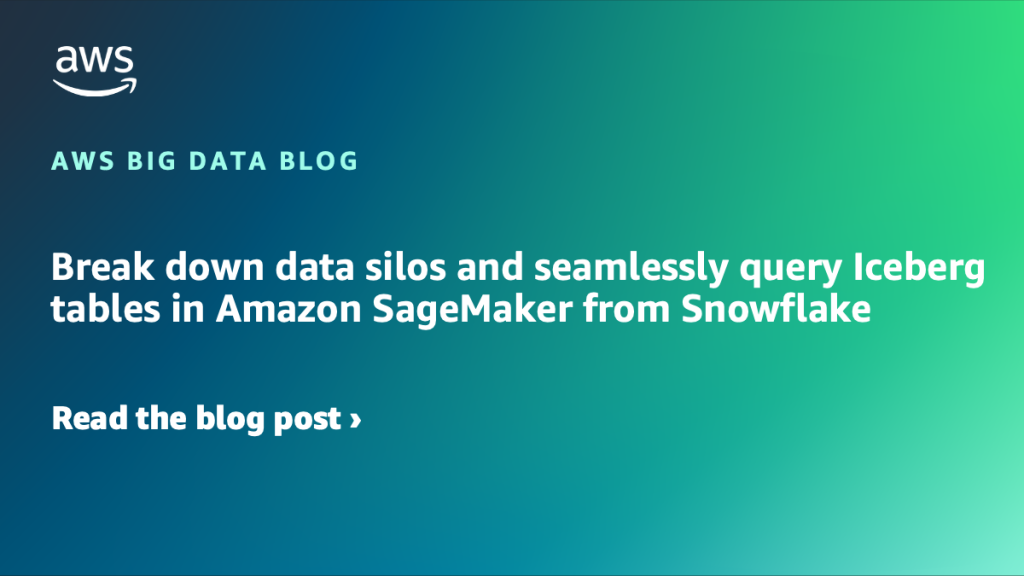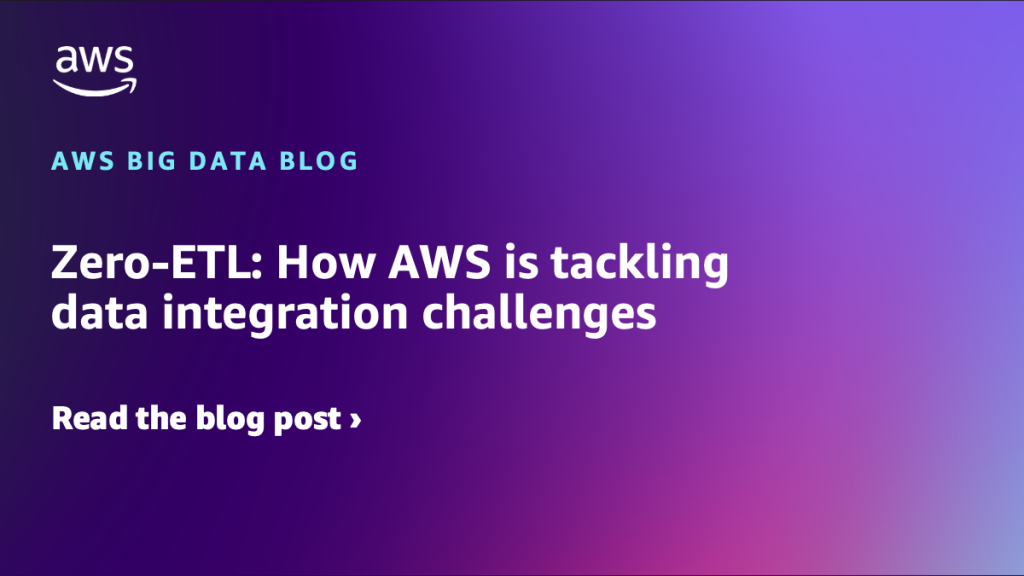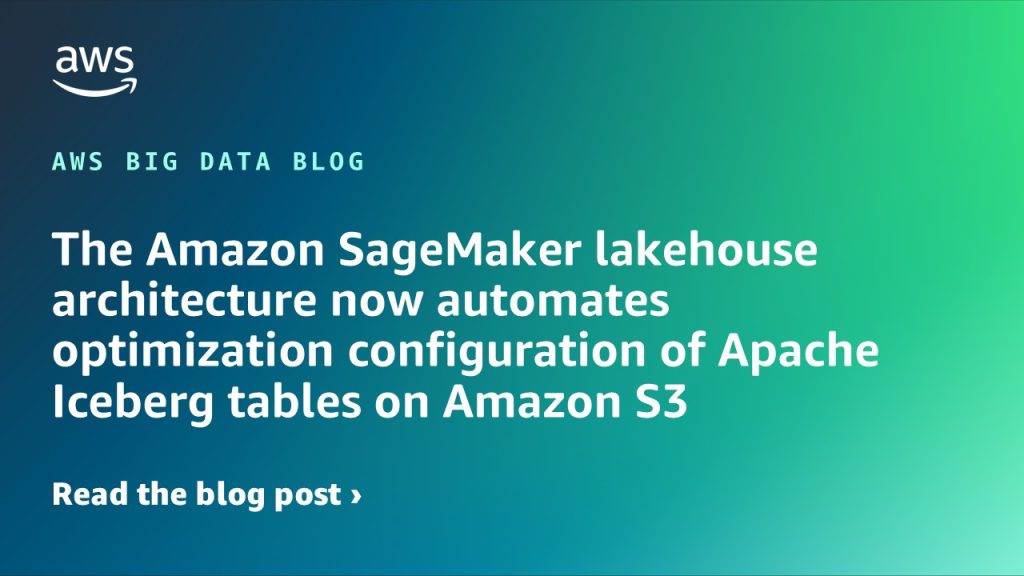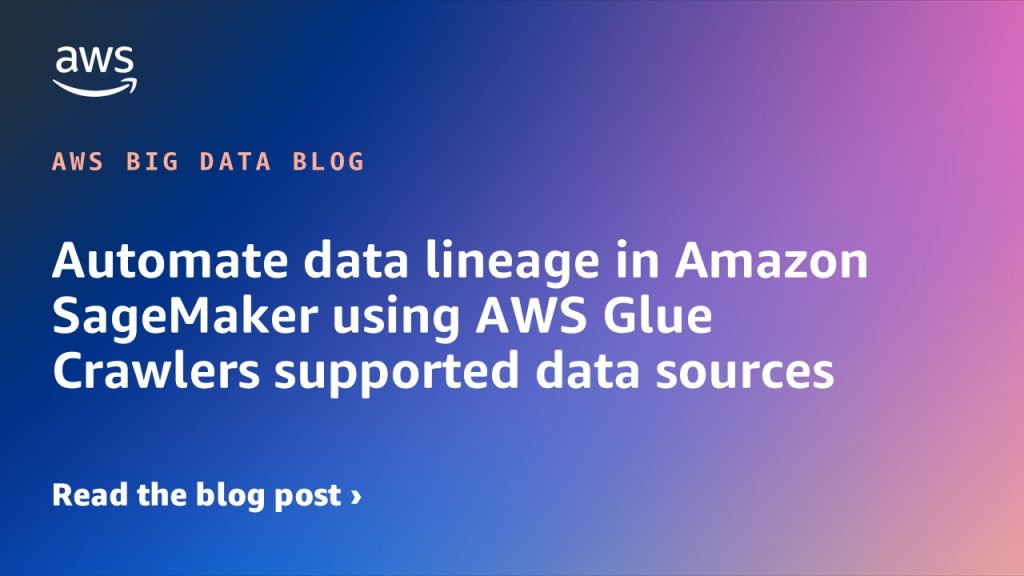AWS Big Data Blog
Category: AWS Glue
Visualize data lineage using Amazon SageMaker Catalog for Amazon EMR, AWS Glue, and Amazon Redshift
Amazon SageMaker offers a comprehensive hub that integrates data, analytics, and AI capabilities, providing a unified experience for users to access and work with their data. Through Amazon SageMaker Unified Studio, a single and unified environment, you can use a wide range of tools and features to support your data and AI development needs, including […]
Seamlessly Integrate Data on Google BigQuery and ClickHouse Cloud with AWS Glue
Migrating from Google Cloud’s BigQuery to ClickHouse Cloud on AWS allows businesses to leverage the speed and efficiency of ClickHouse for real-time analytics while benefiting from AWS’s scalable and secure environment. This article provides a comprehensive guide to executing a direct data migration using AWS Glue ETL, highlighting the advantages and best practices for a […]
Break down data silos and seamlessly query Iceberg tables in Amazon SageMaker from Snowflake
This blog post discusses how to create a seamless integration between Amazon SageMaker Lakehouse and Snowflake for modern data analytics. It specifically demonstrates how organizations can enable Snowflake to access tables in AWS Glue Data Catalog (stored in S3 buckets) through SageMaker Lakehouse Iceberg REST Catalog, with security managed by AWS Lake Formation. The post provides a detailed technical walkthrough of implementing this integration, including creating IAM roles and policies, configuring Lake Formation access controls, setting up catalog integration in Snowflake, and managing data access permissions. While four different patterns exist for accessing Iceberg tables from Snowflake, the blog focuses on the first pattern using catalog integration with SigV4 authentication and Lake Formation credential vending.
Accelerate AWS Glue zero-ETL data ingestion using Salesforce Bulk API
AWS Glue zero-ETL (extract, transform, and load) now supports Salesforce Bulk API, delivering substantial performance gains compared to Salesforce REST API for large-scale data integration for targets such as Amazon SageMaker lakehouse and Amazon Redshift. In this blog post, we show you how to use zero-ETL powered by AWS Glue with Salesforce Bulk API to accelerate your data integration processes.
Zero-ETL: How AWS is tackling data integration challenges
In this blog post, we show you how Amazon Web Services (AWS) is simplifying data integration with zero-ETL while realizing performance benefits and cost optimizations. As organizations gather data for analytics and AI, they are increasingly finding themselves caught in a complex web of extract, transform, and load (ETL) pipelines—the traditional backbone of data integration. […]
The Amazon SageMaker lakehouse architecture now automates optimization configuration of Apache Iceberg tables on Amazon S3
The Amazon SageMaker lakehouse architecture now automates optimization of Iceberg tables stored in Amazon S3 with catalog-level configuration, optimizing storage in your Iceberg tables and improving query performance. This post demonstrates an end-to-end flow to enable catalog level table optimization setting.
Automate data lineage in Amazon SageMaker using AWS Glue Crawlers supported data sources
In this post, we explore its real-world impact through the lens of an ecommerce company striving to boost their bottom line. To illustrate this practical application, we walk you through how you can use the prebuilt integration between SageMaker Catalog and AWS Glue crawlers to automatically capture lineage for data assets stored in Amazon Simple Storage Service (Amazon S3) and Amazon DynamoDB.
Accelerate your data quality journey for lakehouse architecture with Amazon SageMaker, Apache Iceberg on AWS, Amazon S3 tables, and AWS Glue Data Quality
This post explores how you can use AWS Glue Data Quality to maintain data quality of S3 Tables and Apache Iceberg tables on general purpose S3 buckets. We’ll discuss strategies for verifying the quality of published data and how these integrated technologies can be used to implement effective data quality workflows.
Build an analytics pipeline that is resilient to Avro schema changes using Amazon Athena
This post demonstrates how to build a solution by combining Amazon Simple Storage Service (Amazon S3) for data storage, AWS Glue Data Catalog for schema management, and Amazon Athena for one-time querying. We’ll focus specifically on handling Avro-formatted data in partitioned S3 buckets, where schemas can change frequently while providing consistent query capabilities across all data regardless of schema versions.
Secure generative SQL with Amazon Q
In this post, we discuss the design and security controls in place when using generative SQL and its use in both Amazon SageMaker Unified Studio and Amazon Redshift Query Editor v2.
